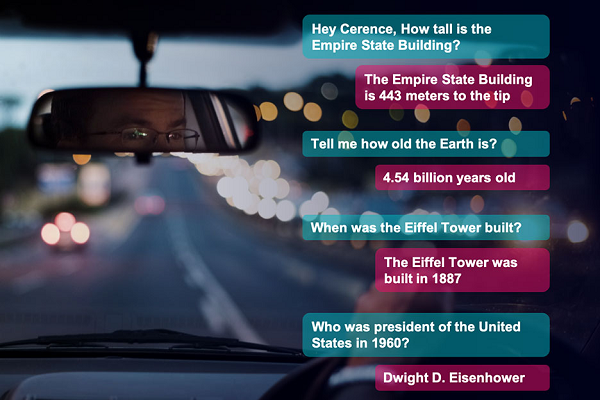Toyota and Lexus Integrate Cerence Browse Voice Search Engine
 Vehicle-centered voice AI mainstay Cerence will power the voice search engine in future Toyota and Lexus vehicles. Toyota Motor North America is the first to pick Cerence Browse as the real-time AI search engine for vehicles, where it will be built into the multimedia system installed in the cars.
Vehicle-centered voice AI mainstay Cerence will power the voice search engine in future Toyota and Lexus vehicles. Toyota Motor North America is the first to pick Cerence Browse as the real-time AI search engine for vehicles, where it will be built into the multimedia system installed in the cars.
Browsing Deep
Cerence Browse connects to public-facing databases and news sources to answer driver questions about general knowledge or about events that are currently happening. The idea for Browse is to open the potential questions to more than just driving or tourism-based subjects to any kind of question. Presumably, that will also keep drivers on the built-in system rather than switching to Alexa or Google Assistant for answers to random queries. To ensure accurate responses, Cerence Browse uses Cerence’s Machine Reading Comprehension AI to look through updated databases and pull out the meaning from wide-ranging questions or even just commands for information like “Tell me about New York.”
“Toyota and Lexus customers are passionate about innovative, intelligent in-car experiences that make their everyday lives easier and more productive,” Toyota Motor North America connected technologies vice president and executive chief engineer Charan Lota said. “We’re proud to be the first automaker to deploy Cerence Browse and empower our customers with on-the-go access to the information they’re accustomed to from other smart home or mobile voice assistants. Buyers of the all-new 2022 Lexus NX and 2022 Toyota Tundra models will be the first to experience this great feature.”
Cerence Services
Implementing Cerence Browse isn’t Toyota’s first time acting as a pioneer in testing Cerence’s services. The company’s Japanese division was the first to experiment with that Cerence Cloud Services when it debuted earlier this year. Cerence’s cloud service centers aim to speed up voice assistants and improve efficiency. The arrangement extended Toyota’s partnership with Cerence, which began in 2014, well before Cerence spun out of Nuance. All of the cloud services grow from Cerence Drive 2.0 at the beginning of the year. The upgrade enhanced the accuracy and speed of connected voice assistants and made the AI better able to understand complex and multi-part commands while expanding the customization and update options for automakers. Browse augments other features like Cerence Look, which combines online databases and gaze-tracking cameras to share insight on what a driver is looking at and can be used to turn the car’s AI into an actual tour guide.
The Toyota deal is a potentially big win for Cerence as it goes through its own changes. The most recent quarterly earnings warned potential supply chain problems ahead, causing at least a temporary stock drop. The Toyota news was also issued just a day after Cerence announced CEO Sanjay Dhawan had stepped down and been replaced by the executive vice president and head of core products, Stefan Ortmanns. The Toyota deal fits with Cerence’s overall strategy of leveraging its strengths to stand out even as the market gets more crowded for voice assistants in cars.
“Cerence Browse is a remarkable Deep Reasoning Network technology built to support automakers in creating unique, human-like responses to questions,” Ortmanns said in a statement. “By implementing Cerence Browse, Toyota can expect to see overall in-car voice assistant usage increase, along with user engagement and satisfaction levels.”
Follow @voicebotai Follow @erichschwartz
Cerence Starts Developing Japanese Motorcycle Voice Assistants
New Cerence Tour Guide AI Shares Audio Insight During Road Trips
Cerence Expands Voice AI Platform to Motorcycles and Elevators








